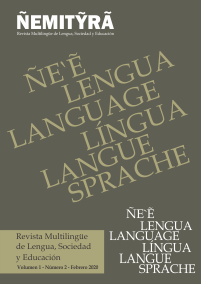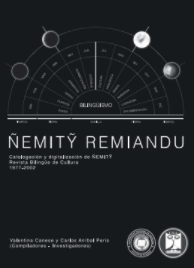Dwelling within the fourfold: Home in Edna O’Brien’s (2011) “Sinners”
Palabras clave:
Irish Literature, Edna O’Brien, HomeResumen
Home, both as representation and as alived experience, has always been central to the narrative of Irish author Edna O’Brien. In this article, though, we seek to explore issues of space and identity that go beyond the question of Ireland.Written at the age of 81, Saints and sinnersdisplay a series of characters who, engulfed by loneliness, experience a persistent crave for a home. In the collection of short stories, homes are constantly constituted by transient representations in an attempt to articulate the Heideggerianfourfold. It is to these representations that the characters in the stories temporarily cling and make theirs in order to provide their lives with meaning and to continue living. Mostly based on an initial BA dissertation devoted to the study of the entire literary work, this article explores the notion ofhome in “Sinners,” the most representative of the short stories in view of our hypothesis. We expect our reflectionto developnot only current discussions on space and identity but also on home as a place to dwell, a concept that has become truly elusive in contemporary times.
Referencias
Akbar, A. (2011). Saints and sinners, by Edna O’ Brien [review]. The Independent. Available at http://www.independent.co.uk.
Ashcroft, B., Griffiths, G. & Tiffin, H. (2002). The empire writes back. (2nd ed.) Routledge: London& New York.
Augé, M. (2000). De los lugares a los no lugares. Los “no lugares” espacios del anonimato. (5th ed.) Barcelona: GEDISA.
Brownrigg, S. (2011, March 5) Saints and sinners, by Edna O’ Brien [review]. Available at http://www.theguardian.com
Cepeda, Y.D. (2016). Home as representation: Space and identity in Edna O’Brien’s Saints and sinners (2011) (Tesis de Licenciatura en Lengua y LiteraturaInglesa). Facultad de Ciencias Humanas, Universidad Nacional de La Pampa, Argentina
Der-Ohannesian, N. (2013). Space and gender: The appropriation of literary territories in the narrative of J. Alvarez, E. Danticat and J. Kincaid(Doctoraldissertation). Facultad de Lenguas. Universidad Nacional de Córdoba.
Guppy, S. (1984) “Edna O’Brien: The art of fiction. An interview.” The Paris Review, 82.
Heidegger, M. (1971). Poetry, language, thought. New York: Harper & Row. (Original work published in 1954)
Mallett, S. (2004). Understanding home: A critical review of the literature. The Sociological Review. 52(1), 62-89.
Murray, T. (2013). Edna O’Brien and narrative diaspora space. Irish Studies Review 21(1), 85-98. DOI:10.1080/09670882.2012.758951
O’Brien, E. (1962). The country girl. Harmondsworth, UK: Penguin.
__________. (2011). Saints and sinners. London: Faber & Faber.
__________. (2012). Country girl. London: Faber & Faber.
Pelan, R. (2006). Edna O’Brien’s “love objects”. In L. Coletta& M. O’Connor (eds.), Wild colonial girl: Essays on Edna O’Brien (pp. 78-91). Madison: The University of Wisconsin Press.
Soja, E. (2001). History: Geography: Modernity. In S. During (ed.). The Cultural Studies reader. (2nd ed.) (pp. 113-125). London & New York: Taylor & Francis.
Stokes, E. (2018). Edna O’Brien has been #metoo-ing for 50 years. The New Yorker. Available at http://www.newyorker.com
Tucker, A. (1994). In Search of Home. Journal of Applied Philosophy, 11 (2), 181–187.










